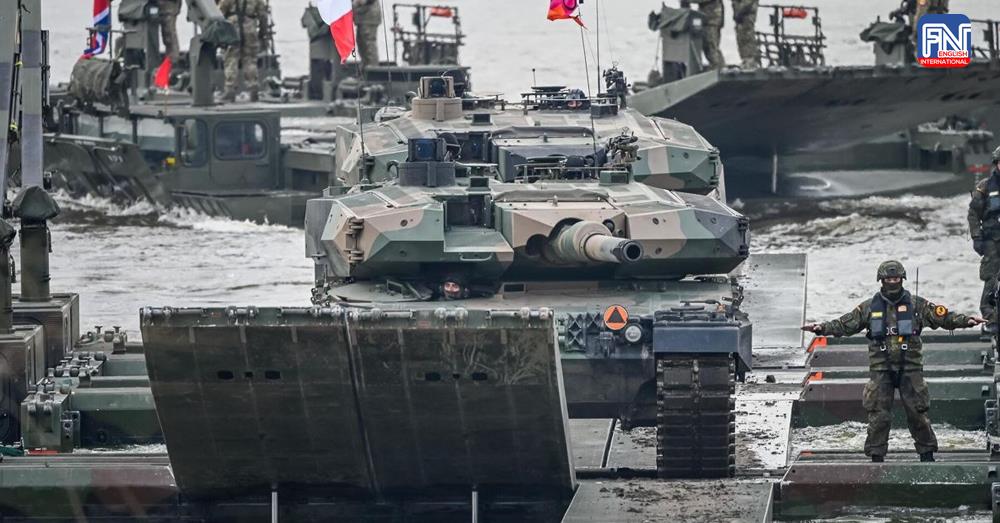BRUSSELS, Mar. 21 (Sputnik) - NATO’s European members have poured tens of billions of euros-worth of weaponry and ammunition into Ukraine to fuel a US-led proxy war against Russia, with little to show for it besides economic crises and soaring budget deficits at home and the loss of their cheapest and most dependable source of energy.
The Western alliance’s European members would have to shell out an additional €56 billion (US$60.8 billion) in cash to meet NATO’s 2 percent of GDP defense spending target, according to research by Germany’s ifo Institute.
The Munich-based think tank has found that many of NATO’s biggest spending loafers are drowning in domestic debt topping 100 percent of GDP, and posting record budget deficits amid the economic crunch pummeling the Eurozone. Germany, for example, expects its budget deficit to hit €17 billion ($18.45 billion) in 2024, with Spain, Italy and Belgium following suit with €11 billion, €10.8 billion and €4.6 billion ($11.94 billion, $11.73 billion and $4.99 billion), respectively. Rome expects its 7.2 percent deficit to raise interest costs for government borrowing to a whopping 9 percent of all revenues this year.
“Countries with high debt levels and high interest costs do not have much room to raise more debt, so the only real way to do it is to cut spending in other areas,” Ifo economist Marcel Schlepper said. “This is not easy, as we saw when Germany tried to cut subsidies on agricultural diesel and the farmers came out in protest,” the analyst noted.
On top of raging budget overruns and spiking debt, EU countries are bracing for new fiscal rules mandated by Brussels which will force them to cut budgets to meet a 3 percent annual deficit requirement and a seemingly impossible to meet 60 percent debt-to-GDP threshold, on penalty of European Commission sanctions.
Thirteen of the EU’s 27 members (11 of them members of NATO) currently surpass the 60 percent debt-to-GDP requirement, among them major bloc powers Germany, France and Italy.
At the same time, in 2023, just 11 of NATO’s then 30 countries (8 of them EU members) met the 2 percent of GDP defense spending requirement.
Coincidentally, the €56 billion shortfall comes close to matching the roughly €51 billion in military aid ($55.4 billion) European countries have committed to the proxy war against Russia in Ukraine over the past 24 months, according to Kiel Institute for the World Economy data. Accounting for economic and humanitarian support, the EU could have comfortably raised defense spending for three consecutive years without any problems if it had not given the money away to Kiev, the institute’s figures show.
European leaders with a hardline anti-Russia position have taken flak for cheerleading an arms race even as social spending is cut and regional economies sink into recession. Last month, Danish Prime Minister Mette Frederiksen was grilled after saying that the Europeans have had it too good for too long, and had better get used to the idea of their governments pouring tax money into defense instead of social programs.





